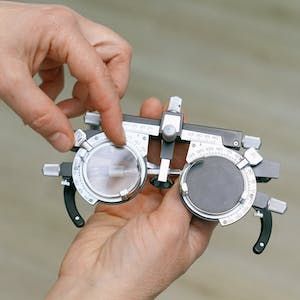Article
Low Bevacizumab Dosage Effective in Infants with Severe Retinopathy of Prematurity
Author(s):
A 0.063 mg dose had a probability of 94% to be ≥95% effective, despite being 4- to 10- times lower than common dosage levels.

Although anti-vascular endothelial growth factor drugs assist in treatment of premature infants with severe retinopathy of prematurity (ROP), it is associated with reduced serum vascular endothelial growth factor levels and may be harmful to premature infants.
A recent study investigated which dose of anti-vascular endothelial growth factor drug, bevacizumab, would be necessary for a large-scale randomized clinical trial, applying a bayesian approach to analyze 8 dose level data.
Investigators, led by Raymond T. Kraker, MSPH, Jaeb Center for Health Research, observed a 0.063 mg dose had a probability of 94% to be ≥95% effective, while the probability this dose is the lowest tested dose of at least 95% effectiveness is only 6%.
Study
The study included infants with type 1 ROP, with no prior treatment and written consent was obtained from the parents of the participants.
A total of 8 dose levels of bevacizuamb were evaluated, including 0.250 mg, 0.125 mg, 0.063 mg, 0.031 mg, 0.016 mg, 0.008 mg, 0.004 mg, and 0.002 mg, each in 10 μL after dilution.
In addition, within each dose level, investigators collected data on the proportion of study eyes meeting success criteria and the 1-sided 95% lower confidence limit for the success proportion.
They used a bayesian statistical model to calculate the probability each of the 8 doses was ≥95% effective in treating type 1 ROP and the lowest tested dose that was ≥95% effective.
Results
In the study, a total of 120 infants were analyzed, with a mean gestational age at time of birth at 24.8 weeks and 71 male (59%) infants.
Self-reported demographics showed 19 infants (16%) were identified as African-American, 17 infants (14%) as Hispanic, and 65 infants (54%) as White.
According to data, the probability a dose of 0.250 mg was ≥95% effective was 100%, as was a dose of 0.125 mg.
In addition, the probability of a 0.063 mg was ≥95% effective was 94%, followed by 0.031 mg at 84%, 0.016 mg at 64%, 0.008 mg at 33%, 0.004 mg at 5%, and 0.002 mg was less than 1%.
Further, the probability that a dose of 0.250 mg was the lowest tested dose was ≥95% effective was less than 1%, as well as 0.125 mg.
In addition, the probability of ≥95% effectiveness of 0.063 mg was 6%, followed by 0.031 mg was 10%, 0.016 mg was 20%, 0.008 mg was 31%, 0,004 mg was 28% and 0.002 mg was 5%.
Conclusion
Investigators noted the 0.063-mg dose since this dose is still 4- to 10- times lower than doses most commonly used, but 0.063 mg may be effective and reduce the risk of adverse systemic effects.
“When considering which dose to study in a future randomized clinical trial, a committee of ophthalmologists placed greater emphasis on the probability that a dose was at least 95% effective than on the probability that the dose was the lowest tested dose that was at least 95% effective,” investigators wrote.
The research letter, “Choice of Dose Level for a Randomized Clinical Trial of Low-Dose Bevacizumab vs Laser for Type 1 Retinopathy of Prematurity,” was published online in JAMA Opthamology.





